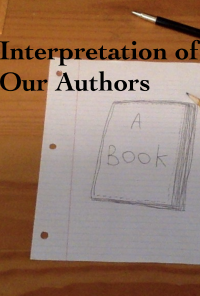Interpreting Sinclair
I cannot think of an author more unlike Hemingway than Sinclair. Upton Sinclair is, in my experience, the stark opposite of Hemingway. Where Hemingway is very sparing with his visual details, and is very intentional in much of what is present, Sinclair packs every big, fat paragraph with imagery. I honestly must say that I prefer Sinclair to Hemingway, and purely for this reason. There was never a setting in “The Jungle,” not so much as a single room, in which I felt that I did not know the exact placement of every single physical object, down to the very inch. And it is not simply the physical appearance of the rooms and settings that Sinclair describes, but the actions of the people and characters in them, and the functions of the machines whenever one was present in the story, and really everything that one could wish to know about a setting. The story of Jurgis and the poor immigrant family is one that is splendidly detailed.
When reading “The Jungle,” I felt so confident in my perception of the stockyards of Chicago, that I felt that if I could be transported back in time to the city as it was around 1906, I could easily make my way around the sludge and filth of the more unfortunate parts city, to every tavern and across every sidewalk. To most readers and writers whom I have had the opportunity to talk with regarding the use of imagery in stories, excessive detail is nothing but a bore. I, however, often admire the visual imagery of a setting more than I do the plot line and its conflicts itself. Sinclair is a true genius when it comes to detail, and thus, it is shocking that I had misunderstood his purpose for writing “The Jungle.”
I, like most people I know who have read the impressive work of literature, at first assumed that it was merely to expose the disgusting processes by which the meat-packing industry went about its business. The filth and grime and scum of the food that was produced at “Brown’s” and “Durham’s,” as stated in the book, one “wouldn’t feed to their dog.” Indeed, it would seem that many of the others who have read this book assumed so. The work arguably led to the passage of the Meat Inspection Act and the Pure Food and Drug Act in the United States of America, shortly after its later printings. Yet, upon further inspection of the book, this becomes merely a secondary (or even tertiary) takeaway, at least the way it was intended.
Admittedly, I did not find this out until about three months until I had finished reading “The Jungle,” when a family member of mine was giving a lecture and brought up the famous work by Sinclair. She told me that a student had come up to her after the lecture, and had conversed with her concerning the unfortunate fact that Sinclair was, apparently, unsatisfied with how the public interpreted his book. I, of course, had to conduct some research into this myself, and also flipped back through some of the book’s pages while I was at it.
Indeed, upon further inspection, it appears that the main point that Sinclair was trying to force upon the reader is much more timeless than the quality of meat production and packaging at the time: it was a work largely meant to expose the harsh, brutal, and completely unfair treatment and exploitation of immigrants in the lower levels of the United States workforce. It seems that every country, no matter how old and no matter in what state of its development, tends to bounce back and forth about its immigration policies, and Sinclair sought to address it in “The Jungle.”
What the public perceived, however, was not that there needed to be reforms made to protect immigrants, but that there needed to be reforms to the meat-packing industry (which, there did, but this was not as immediate, it would seem, as lending aid to the poor immigrant workers of America). Upon comprehending that his readers were missing the main point of his work, Sinclair famously stated, “I aimed at the public’s heart, and by accident I hit it in the stomach.”
After I had read this quote, I felt a little bit of shame - I am not prone to feeling emotion from literature, but I should have at least felt some tinge of sadness for the poor, abused immigrant family simply trying to make ends meet in Chicago. Then there is the socialist aspect of the story. Sinclair was indeed a socialist, and as much as a capitalist as I am, he did an excellent (I cannot emphasize the word “excellent” enough, here) job at making socialism seem well-reasoned and, dare I say it, feasible. In fact, many of the royalties he gained from his book, Sinclair used to create a small utopian colony in New Jersey (that would burn down in 1907).
In the end, ever since reading “The Jungle,” I have seen Sinclair as a writer of many intentions, all of them good-hearted at the very least. In addition to his intentions in writing, whatever they may be, he will always be, in my eyes, an expert at mastering imagery and detail. He wielded a pen as if he were born to do so, and he holds a special place among my favorite authors (the fact that he is in this book alone should represent that). It seems that, though “The Jungle” brought change in its time, the main message that Sinclair was attempting to convey is, unfortunately, as timeless as death itself, it would seem. For truly, when will we stop comprehending our fellow humans based on political borders and simply accept them as fellow creatures of life?
